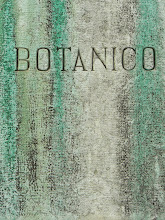 Arboretums and Botanical centres are now targeting homeowners
Arboretums and Botanical centres are now targeting homeownersThe Arnold Arboretum, one of Frederick Law Olmsted’s better preserved landscapes, could easily be described as a 265-acre research facility. Run jointly by Harvard University and the city of Boston, the landmark is where specialists can find detailed taxonomic organisation and labelling, a herbarium and archives stretching back well into the 1800s. Scientists use it to conduct important studies...and to observe pathogens and insects, including the wooly adeligid, which has destroyed much of the local hemlock collection.
But the arboretum also attracts average visitors. In winter, snow highlights the carefully orchestrated naturalism and draws a steady stream of urban skiiers and sledders. And then there is the Leventritt Garden, a recent addition set on a 4-acre parcel adjacent to Olmstead’s landscape . With linear gravel paths, stone walls and New England vernacular-modernist pavilion, this new space showcases shrubs and vines suitable for residential landscaping and it won the American Society of Landscape Architects 2007 General Design Award of Excellence,
“The garden has an educational component that’s just not possible in the rest of the arboretum,” says Peter Del Tredici, a senior research scientist and lecturer in the landscape programme at the Harvard Graduate School of Design, who worked on the climate change study. “It’s more accessible to the general public.”
The design process behind Olmsted’s archetypal landscapes, for example, can be difficult for non-specialists to discern. “They look like they’ve been there for ever. His reinterpretation of 18th-century English gardens have morphed into spaces that are now so stately and gorgeous,” she says. “It can be difficult teasing out that they are completely constructed.”
Although landscaping clients have fairly conservative taste, designers can introduce them to progressive environmental and aesthetic ideas through the arboretums and botanical gardens that have added contemporary designs, demonstration plots and classes.
Kearsley praises these institutions for leading by example. “I come from a long line of gardeners and there’s a strong sense that you’re passing plants to the next generation,” she says. “Few residential projects are expected to last as long as 25 years. If you can afford to have a 40ft tree brought in, you don’t have to have this kind of respect for time. And people don’t stay in their houses that long. There’s not the same sense of stewardship.”
in Financial Times, 29 de Novembro de 2008, por Ted Smalley Bowen
FOTO: Arboreto do Jardim Botânico continua em grande parte adormecido para o papel que pode desempenhar na sociedade portuguesa.



Sem comentários:
Enviar um comentário